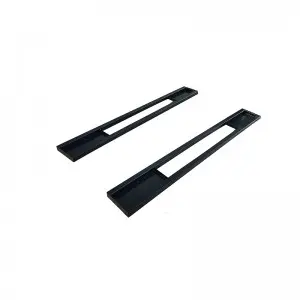
The Evolution of the Cylinder: From Ancient Times to Modern Applications
The cylinder is a simple yet powerful geometric shape that has been used in numerous fields for centuries. From ancient times to modern applications, this shape has proved to be essential in various industries, ranging from engineering to art. In this article, we will delve into the history of the cylinder and explore its significant contributions to the development of civilization.
The concept and understanding of the cylinder can be traced back to ancient Mesopotamia, where the earliest known examples of cylindrical seals and pottery can be found. These artifacts date back to around 3000 BCE and reveal the early humans’ fascination with this symmetrical shape.
One of the most famous ancient uses of the cylinder comes from ancient Egypt – the construction of massive structures known as obelisks. These impressive monuments were carved from a single piece of stone and showcased the Egyptians’ advanced knowledge of mathematics and engineering. The precise shaping of the obelisk into a cylindrical form allowed for stability and longevity, which is evident in their preservation throughout history.
The cylinder’s influence expanded beyond construction and engineering, making its mark in literature as well. The famous Greek mathematician Archimedes is credited with discovering the principles behind the buoyancy of irregularly shaped objects, famously illustrated by the story of him running naked through the streets exclaiming “Eureka!” He realized that the volume of an object could be measured by the amount of water it displaces. This concept was crucial in his further calculations, including the estimation of the volume of a sphere using the cylinder’s properties.

The Evolution of the Cylinder: From Ancient Times to Modern Applications
Fast forward to the Renaissance period, and the cylinder became a staple in the art world. Artists like Leonardo da Vinci and Michelangelo recognized the importance of understanding geometric shapes in their works. The cylinder’s three-dimensional form was studied meticulously in their sculptures and paintings, adding depth and realism to their creations.

The Evolution of the Cylinder: From Ancient Times to Modern Applications
The cylinder’s practical applications in industry became more apparent during the Industrial Revolution. With advancements in manufacturing and precision engineering, cylinders found their place in various machines and mechanisms. Steam engines, for example, relied heavily on the power of cylinders to convert heat energy into mechanical work, revolutionizing transportation and manufacturing processes.
In the modern era, the cylinder continues to play a pivotal role in many industries. In automobile engines, the cylinder is an integral part of the combustion process, providing power to propel vehicles forward. Hydraulic and pneumatic systems rely on cylinders to convert fluid or air pressure into linear motion, enabling the functioning of heavy machinery and equipment.
Moreover, the cylinder is utilized in the fields of architecture and urban planning. Skyscrapers, for instance, rely on cylindrical components such as elevators and pipes to ensure efficient circulation of people and resources within the building. The cylinder’s structural stability also allows for innovative designs that can withstand external forces and environmental conditions.
In conclusion, the cylinder’s journey from ancient times to modern applications showcases its significance in the development of civilization. From its initial use in ancient seals and obelisks to its vital role in art, mathematics, engineering, and industry, the cylinder has left an indelible mark on multiple disciplines. As technology continues to evolve, the cylinder will undoubtedly find new and innovative applications, solidifying its place as a fundamental shape in human achievement.quick lift car lift
